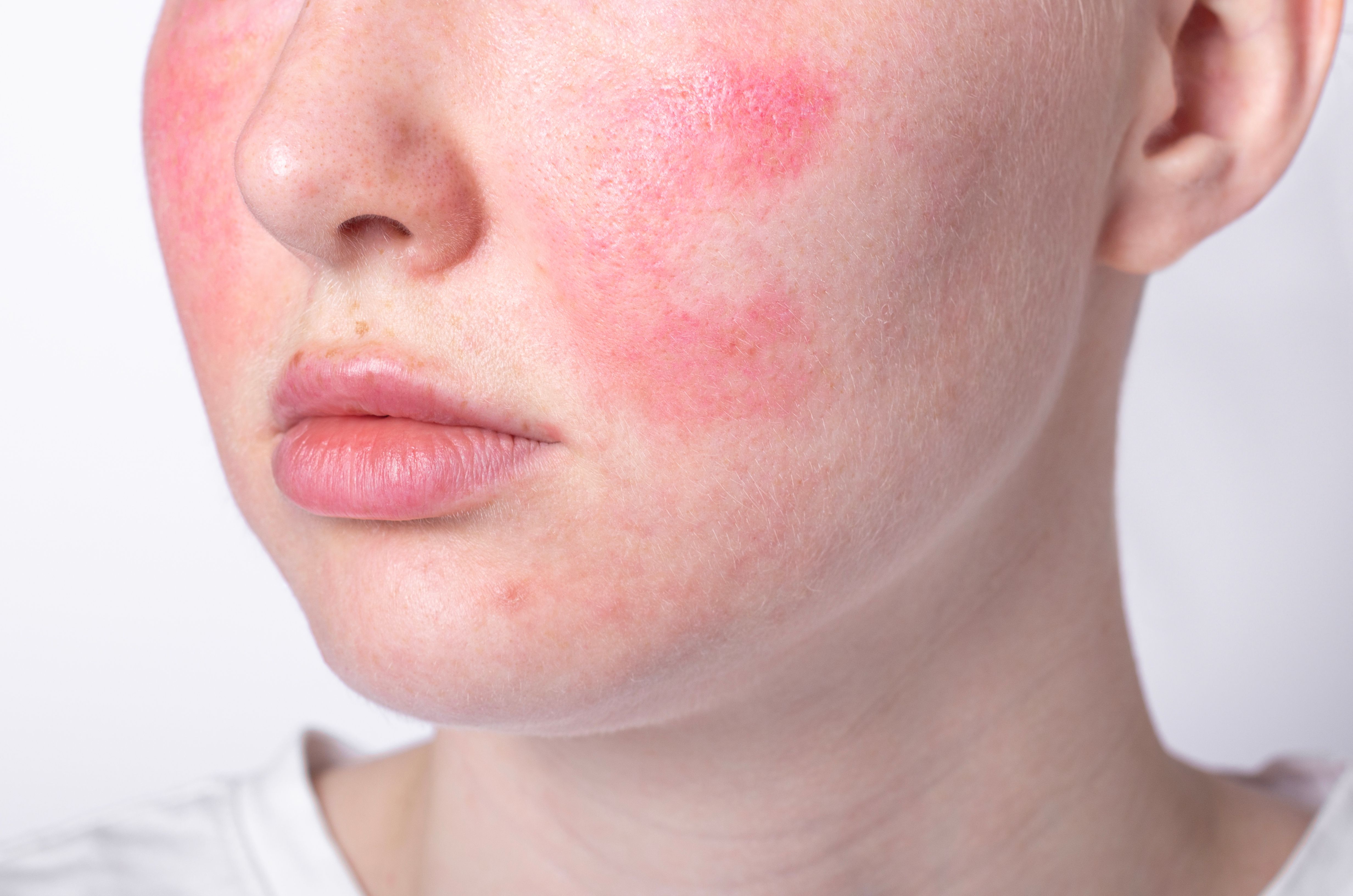- Acne
- Actinic Keratosis
- Aesthetics
- Alopecia
- Atopic Dermatitis
- Buy-and-Bill
- COVID-19
- Case-Based Roundtable
- Chronic Hand Eczema
- Chronic Spontaneous Urticaria
- Drug Watch
- Eczema
- General Dermatology
- Hidradenitis Suppurativa
- Melasma
- NP and PA
- Pediatric Dermatology
- Pigmentary Disorders
- Practice Management
- Precision Medicine and Biologics
- Prurigo Nodularis
- Psoriasis
- Psoriatic Arthritis
- Rare Disease
- Rosacea
- Skin Cancer
- Vitiligo
- Wound Care
News
Article
Patients with Rosacea are More Likely to Develop Anxiety and Depression
Author(s):
Key Takeaways
- Rosacea significantly affects quality of life and emotional well-being, with higher severity linked to increased depression and anxiety.
- The study in Jordan involved 396 participants, using DLQI and HADS to assess quality of life and emotional health.
In Middle Eastern communities specifically, patients with higher disease severity and duration are predicted to have poorer psychological outcomes.
Image Credit: © Ольга Шефер - stock.adobe.com

New research measured the overall quality of life and emotional well-being in patients with rosacea when compared to healthy controls.1 It was found that those with higher disease duration and severity are more likely to have depression and anxiety.
It is proven that the redness, lesions, and ocular discomfort associated with rosacea can damage a patient’s self-image, self-esteem, and overall well-being.2 However, this trial addresses a gap in research regarding the impact of rosacea in Middle Eastern communities, as cultural and environmental factors may differ from other regions.
The case-control study took place at a hospital outpatient department in Jordan between September 2022 and November 2023. A total of 396 patients were split into a healthy control group and a rosacea cohort. Patients with rosacea were 18 years and older with a confirmed clinical diagnosis and a disease duration of 3 months or more. They were categorized into four subtypes: erythemato-telangiectatic, papulopustular, phymatous, or ocular rosacea. Participants in the healthy cohort were also adults 18 and older and did not have any chronic skin conditions. Between the 2 groups, the mean age was about 37 years and 75% of all participants were female.
Each participant and investigating physician completed a questionnaire that recorded sociodemographic characteristics, disease-related information, and the level of quality of life, anxiety, and depression. More specifically, the information was classified into 6 domains; symptoms and feelings, daily activities, leisure, work/school, personal relationships, and treatment. The Dermatology Life Quality Index (DLQI) and the Hospital Anxiety and Depression Scale (HADS)were used to assess health-related quality of life. Additionally, the Clinician’s Erythema Assessment (CEA) was used to evaluate disease severity.
Patients with rosacea had significantly higher DLQI scores (mean 11.32 ± 5.4). While most controls had a grade of 1, over 60% of the rosacea group had a grade of 3, 4, or 5 on the DLQI, equating to a very large, extremely large, or unbearably large effect on the quality of life. The reduced quality of life was noted in all domains, but the most significant differences were seen in symptoms/feelings and daily activities.
Investigators also saw increased scores on the HADS, with a mean of 9.38 ± 3.2 for anxiety and a mean of 8.19 ± 4.3 for depression. More than half experienced moderate or severe anxiety while 31% had moderate or severe depression. According to the authors, this may be caused by appearance-related social anxiety and stigma, especially when triggered by flushing episodes.
Based on the regression analyses, those with higher disease severity and duration were predicted to have worse quality of life, depression, and anxiety. Patients with > 3 years of duration had significantly lower anxiety scores (mean 7.23, p = 0.007). Moreover, those with more than 4 facial lesions and greater CEA severity scores had higher mean DLQI scores and anxiety scores. Among the rosacea subtypes, papulopustular patients had the highest DLQI scores (mean 11.27) while phymatous patients had the highest anxiety and depression scores with averages of 9.74 and 8.85, respectively.
Several limitations were considered, like the study’s case-control design and limited generalizability, due to the use of hospital recruitment only. Long-term research addressing the influence of other matching factors not tracked in this study could be beneficial.
Overall, these findings align with what was previously reported in other global studies. This further emphasizes that a holistic, multidisciplinary treatment approach involving routine psychosocial screening from mental health professionals is highly recommended for patients with rosacea.
“Patient education should include both skincare management and coping strategies for psychosocial challenges. Special attention should be paid to newly diagnosed patients, who may be more vulnerable to psychological distress compared to those with longer disease duration,” the authors wrote.“These interventions should be tailored to the Jordanian cultural context, where facial appearance significantly impacts social interaction.”
References
1. Seetan K, Gablan M, Alnaimi M, et al. Assessment of depressive and anxiety symptoms and health‐related quality of life in rosacea patients: A case‐control study. Dermatology Research and Practice. 2024;2024(1). doi:10.1155/drp/5532532
2. Heisig M, Reich A. Psychosocial aspects of rosacea with a focus on anxiety and depression. Clin Cosmet Investig Dermatol. 2018;11:103-107. Published 2018 Mar 6. doi:10.2147/CCID.S126850
Newsletter
Like what you’re reading? Subscribe to Dermatology Times for weekly updates on therapies, innovations, and real-world practice tips.














